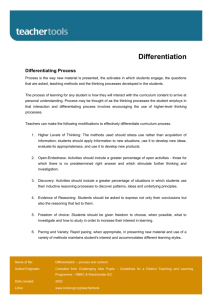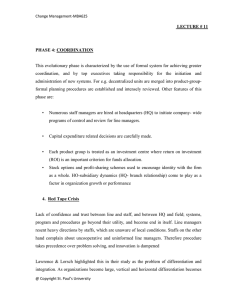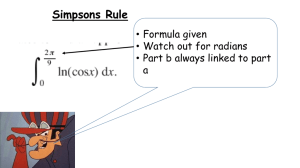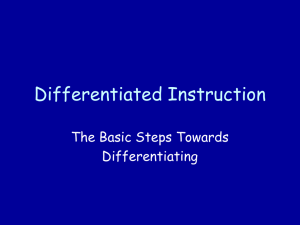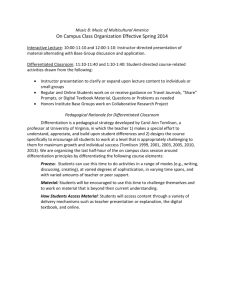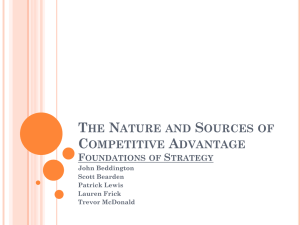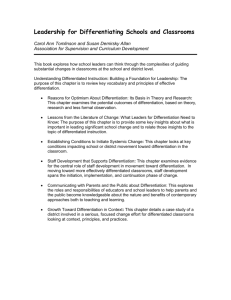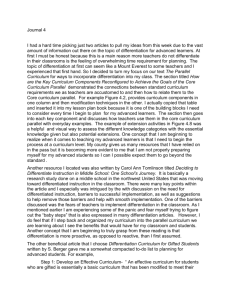Differentiation Explained
advertisement
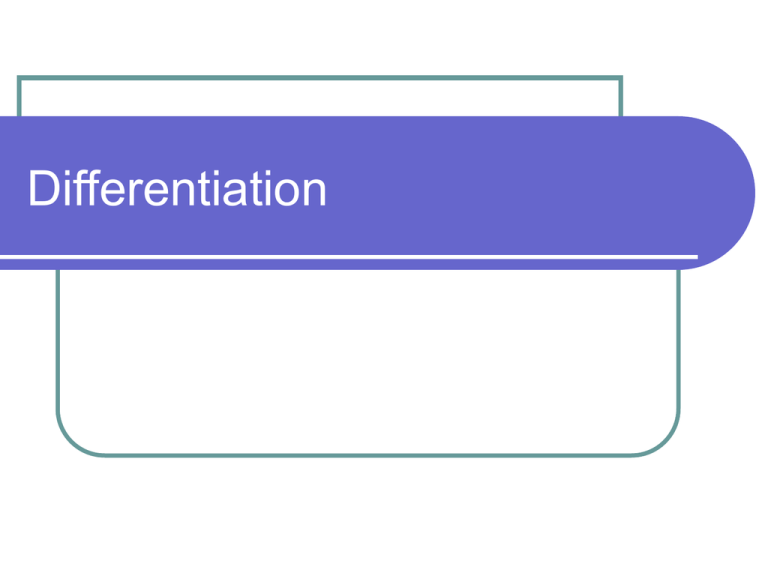
Differentiation Objectives 1. 2. 3. 4. 5. Define the term differentiation. Explore the differences found in students. List ways of differentiating in the classroom. Design differentiated reading tasks. Design differentiated writing tasks. Definition “Differentiation is coping with difference, to ensure learning for all”. (Geoff Petty, 2005) “Differentiation involves adapting the way work is set and assessed in order to meet the needs of a range of abilities within the same class”. (Kyriacou,1998) Matching Examples of matching to ability: In Maths 43% well-matched 26% too easy 28% too difficult In Language 40% well-matched 26% too easy 29% too difficult (Cohen et.al., 2004) What sort of differences do students have? Ability Prior learning Learning speed Missed attendance Social & cultural background Maturity Motivation Learning style Other individual needs Ways of differentiating Time allowances & pacing The amount, type and quality of teacher attention, prompting, support, demand & challenge The type of language that the teacher uses & the level & order of questioning The style of teaching The social arrangements, groupings & working arrangements in the class The activity, task type (extension, application, practice), demands, cognitive challenge and expected outcomes, covering similar content at different levels Responsiveness to students’ optimum & preferred styles of learning (Cohen et.al., 2004) Differentiation by: Task (same content, different levels) Outcome (same general task but pupils work at their own level) Learning activity (same task at the same level but in a different way) Pace (same content, same level but different rate) Dialogue (teacher discusses work with individual students to tailor the work to their needs) (Kyriacou, 1998)
